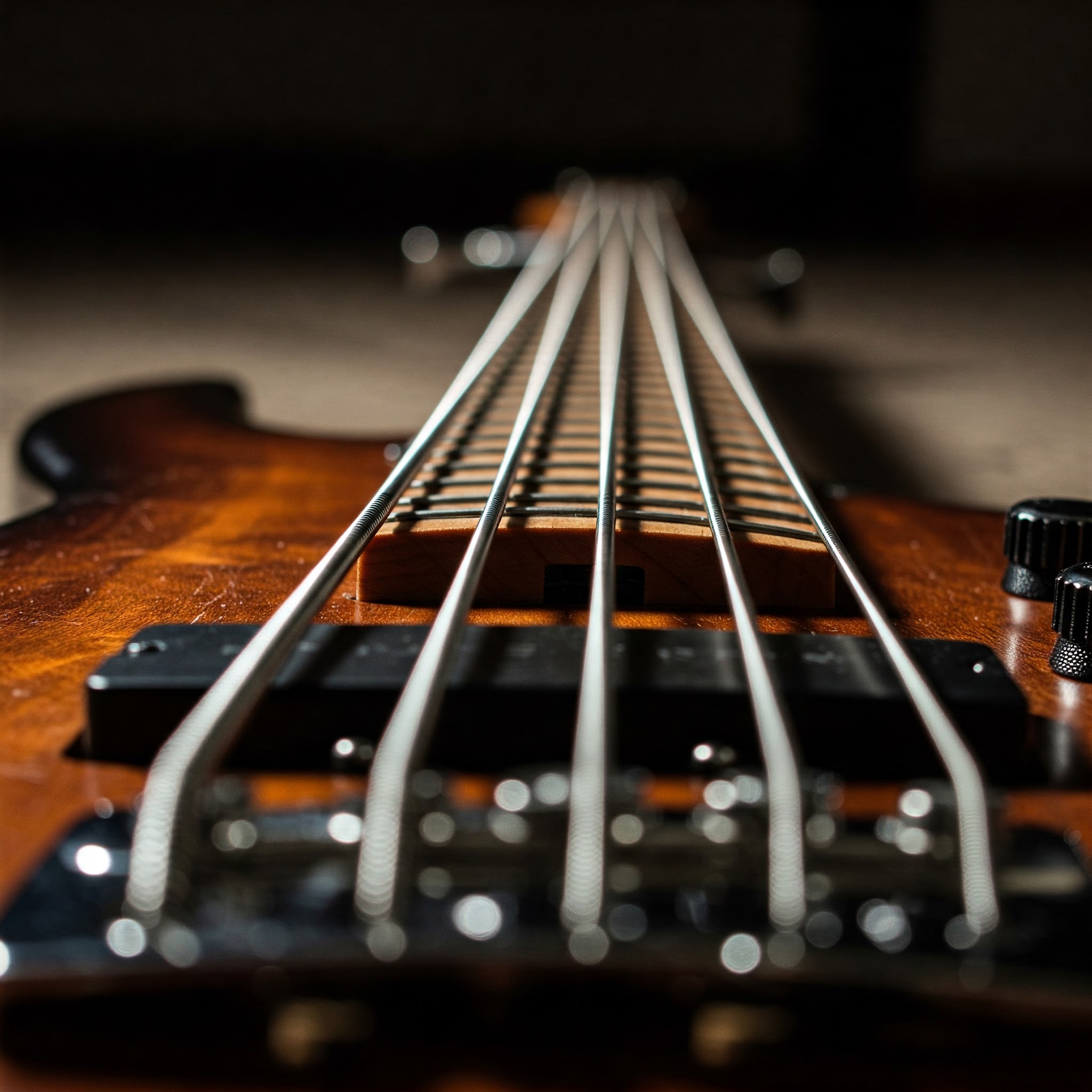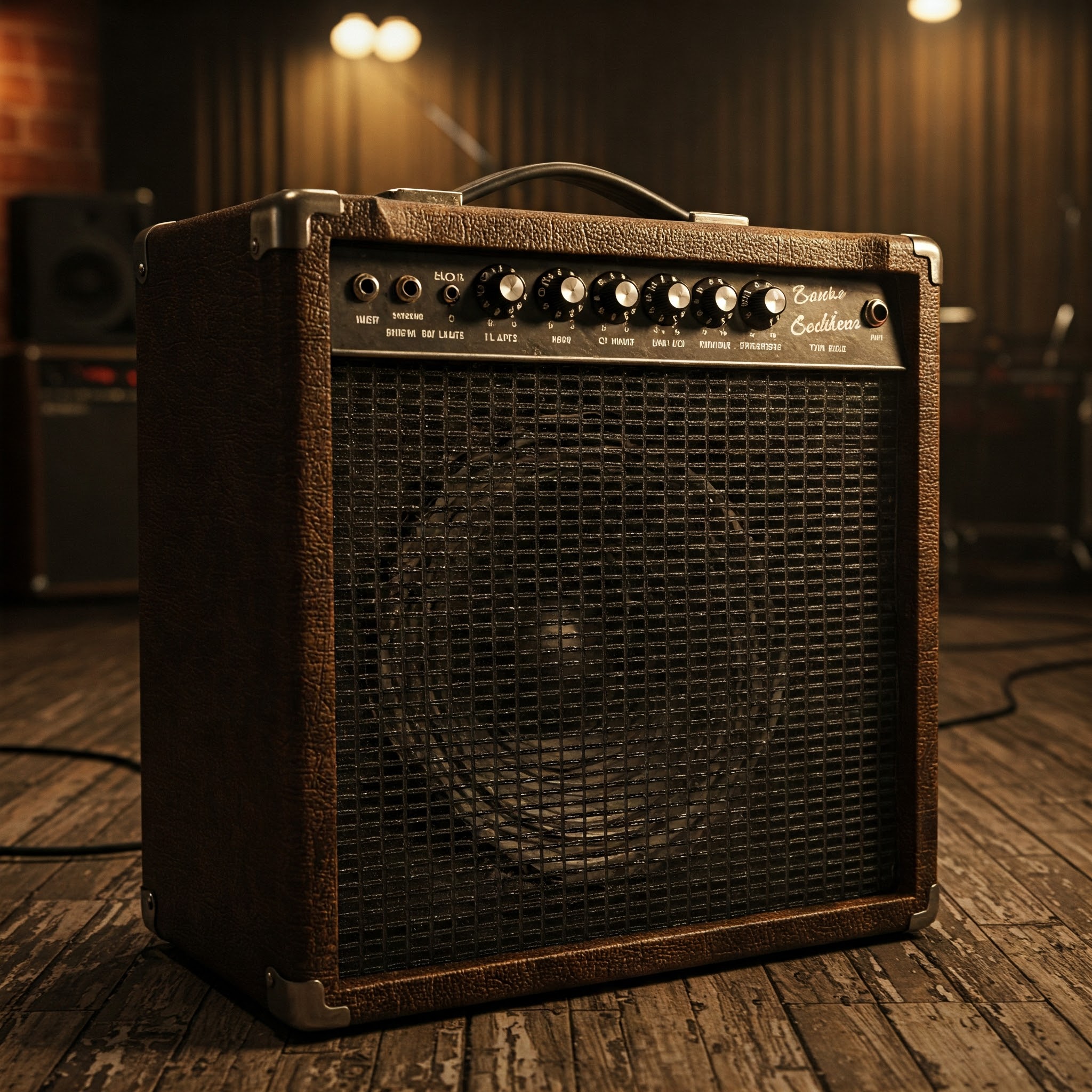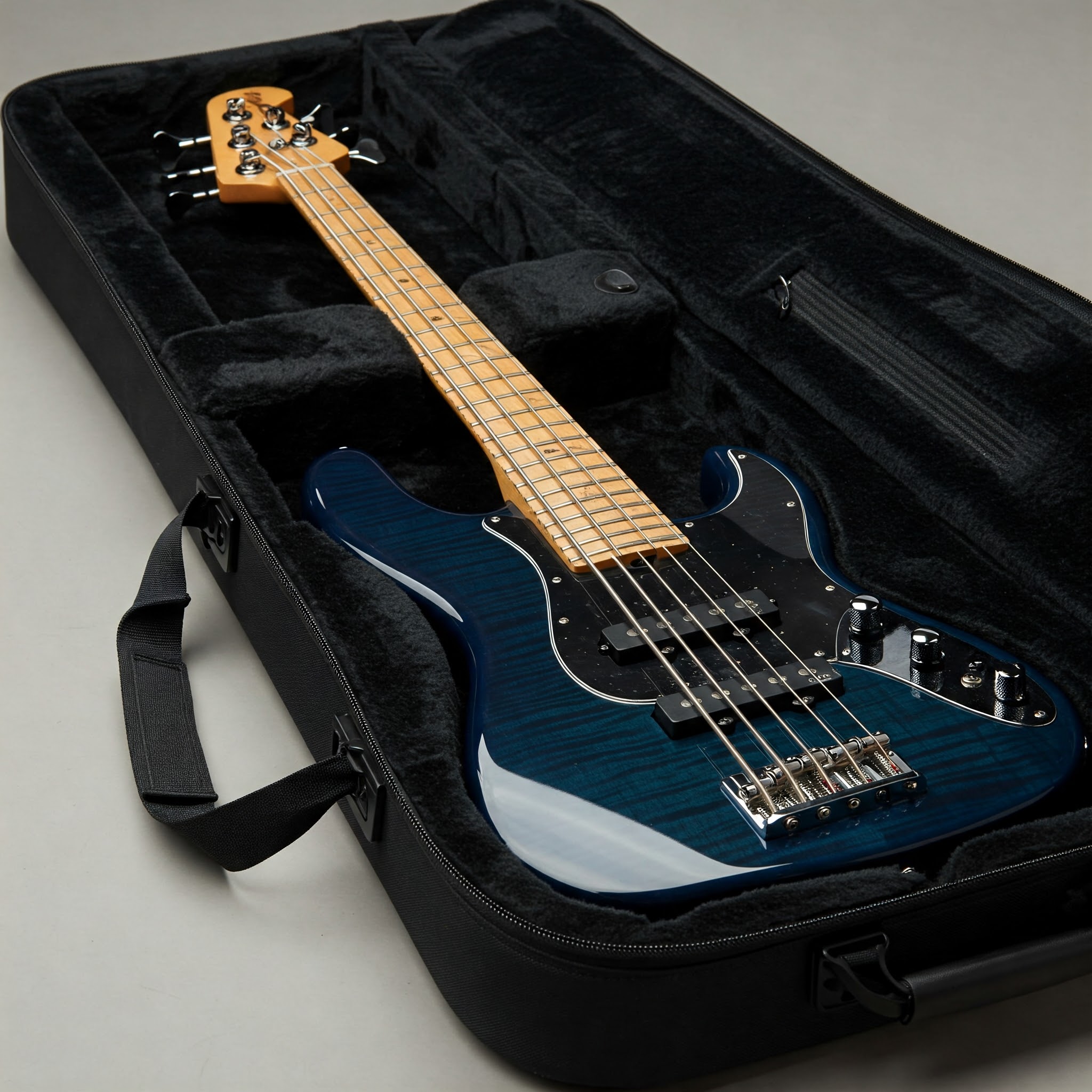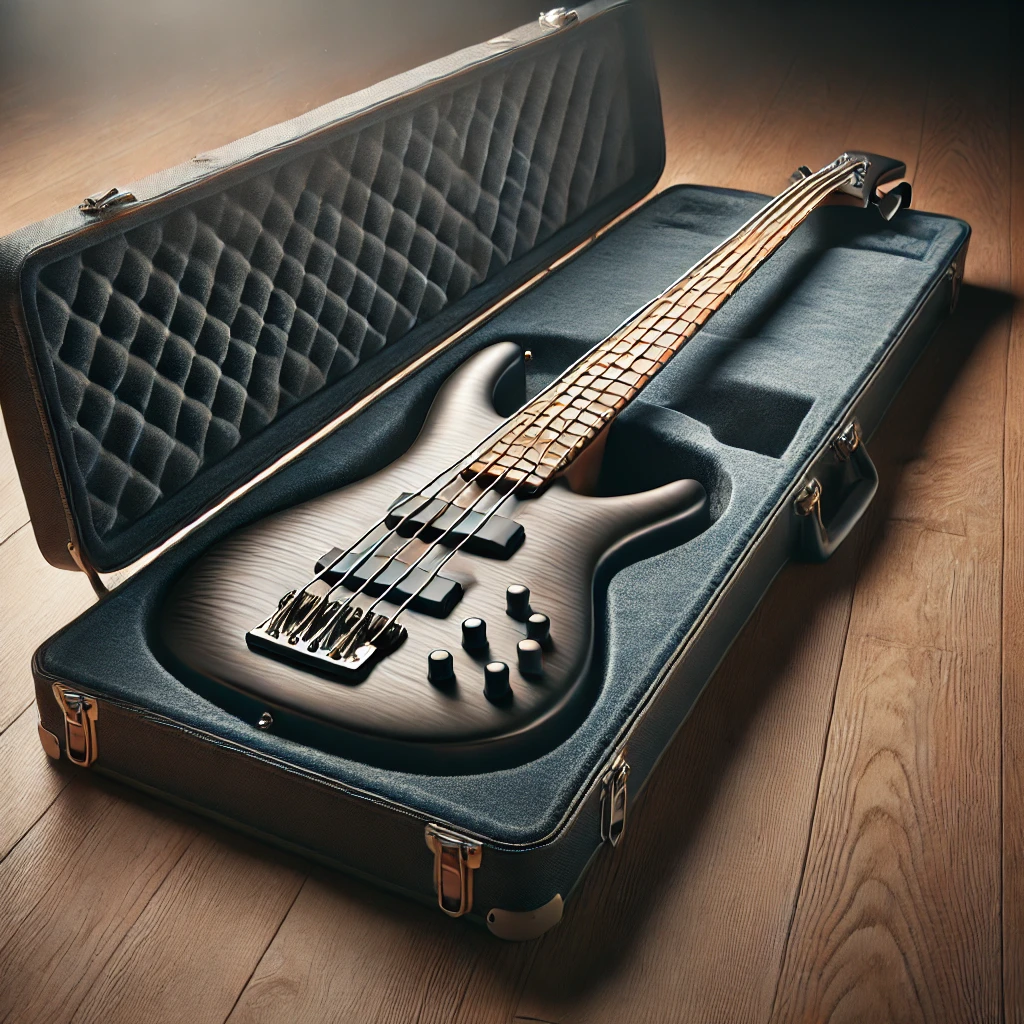Finding Your Perfect Bass Companion 🎸
The unmistakable thump and groove of a 4 string electric bass guitar forms the backbone of virtually every genre of music we love today. As a bassist for over 15 years, I’ve experienced firsthand how the right instrument can transform not only your sound but your entire musical journey. Whether you’re just starting out or looking to upgrade your current setup, choosing the perfect bass can feel overwhelming with so many options available.
A quality 4 string electric bass guitar delivers that fundamental low-end punch that drives songs forward while providing the versatility to explore everything from funk and jazz to rock and metal. Throughout this comprehensive guide, I’ll share expert insights on the top models available today, key features to consider before making your purchase, and how to find the perfect match for your playing style and budget.
Let’s dive into the world of bass and discover which 4 string electric bass guitar might become your new favorite musical companion!
Why Choose a 4 String Electric Bass Guitar? ⚡
Before exploring specific models, let’s understand why the 4 string electric bass guitar remains the most popular choice among bassists worldwide:
✅ Approachable Learning Curve: With four strings tuned to E-A-D-G (the same as the lowest four strings on a guitar), beginners find these instruments more manageable to learn.
✅ Versatility Across Genres: From rock and metal to jazz, funk, and beyond, a 4 string electric bass guitar handles virtually any musical style with ease.
✅ Comfort and Playability: The narrower neck compared to 5 or 6 string basses makes it more comfortable for players with smaller hands or those new to the instrument.
✅ Simplified Navigation: Fewer strings mean less complexity when navigating the fretboard, allowing you to focus on technique and rhythm.
✅ Traditional Sound Profile: The classic bass tone that’s defined popular music for decades comes predominantly from 4 string models.
As a bassist who’s played everything from 4 to 6 string models, I consistently return to my 4 string electric bass guitar for most performances and recording sessions. There’s something uniquely focused and purposeful about having just the essential strings you need for most music.
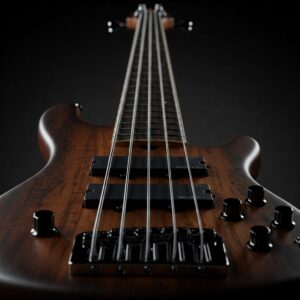
Top 10 4 String Electric Bass Guitars for Every Budget in 2025 🔥
After testing dozens of instruments and gathering feedback from both professional and amateur bassists, I’ve compiled this definitive list of the best 4 string electric bass guitar options currently available:
1. For Beginners: Entry-Level Excellence
Ibanez GSR200 4-String Electric Bass
The Ibanez GSR200 continues to reign as the ultimate beginner-friendly 4 string electric bass guitar. With its comfortable profile, reliable hardware, and surprisingly rich tone, this model punches well above its price point.
Key Features:
- Lightweight poplar body reduces strain during long practice sessions
- Fast maple neck with rosewood fretboard
- Active Phat II bass boost for enhanced low-end when needed
- Available in multiple attractive finishes
- Includes Ibanez’s famous “B10” bridge for improved sustain
For newcomers seeking quality without breaking the bank, the GSR200 offers exceptional value. I often recommend this model to my students because it provides the perfect balance of playability and tone that won’t frustrate beginners.
Squier by Fender Affinity Series Precision Bass PJ
Another standout in the entry-level category, the Squier Affinity P-Bass with added J-pickup delivers versatile tones that can grow with the player. The combination of Precision and Jazz Bass pickups provides impressive sonic flexibility that beginners will appreciate as they explore different musical styles.
2. Mid-Range Marvels: Serious Quality Under $800
Sterling by Music Man StingRay Ray4
The Ray4 brings the legendary StingRay sound to a more affordable price point without sacrificing the essential characteristics that make this 4 string electric bass guitar so beloved. The distinctive preamp and humbucker pickup deliver that punchy, aggressive tone that’s perfect for slap techniques and cutting through a mix.
What Makes It Special:
- Active electronics with 2-band EQ
- Iconic StingRay body shape and aesthetic
- Ultra-comfortable neck profile
- High-mass bridge for enhanced sustain
- Rock-solid tuning stability
Having played this bass extensively, I can confirm it captures about 85% of the sound and feel of its more expensive Music Man counterpart at roughly one-third the price.
Yamaha TRBX504 4-String Premium Electric Bass Guitar
Yamaha’s premium TRBX504 represents exceptional craftsmanship with its mahogany body, 3D design for improved upper fret access, and active/passive switching capability. The refined electronics and premium hardware make this 4 string electric bass guitar feel like instruments costing twice as much.

3. Professional-Grade: Premium Instruments
Fender American Professional II Precision Bass
The gold standard in 4 string electric bass guitar design, Fender’s American Professional II P-Bass offers unmatched quality and the iconic tone that’s defined countless recordings across virtually every genre. The updated V-Mod II pickup delivers improved articulation while maintaining that classic P-Bass thump we all know and love.
Professional Features:
- Premium alder body with gloss finish
- “Super-Natural” satin finish maple neck
- Redesigned bridge for improved feel and tone
- Posiflex graphite rods for superior neck stability
- Bone nut for enhanced sustain and tuning stability
While the price point puts it firmly in professional territory, this instrument represents an investment that will last decades with proper care. I’ve owned mine for years, and it continues to be my go-to bass for recording sessions.
Sandberg California II TM4 Bass Guitar
A boutique option that’s gained tremendous popularity among professional bassists, the Sandberg California delivers exceptional handcrafted quality, custom-wound pickups, and unique tonal characteristics that help it stand out even in crowded markets.
4. Best Value: Exceptional Quality-to-Price Ratio
ESP LTD B-204SM 4 String Electric Bass Guitar
With its stunning spalted maple top, active 3-band EQ, and premium appointments, the ESP LTD B-204SM offers boutique-level aesthetics and versatile tones at a surprisingly accessible price point. The neck-through construction provides enhanced sustain and stability that’s rare in this price range.
Schecter Stiletto Custom-4 Bass
Schecter continues to deliver outstanding value with the Stiletto Custom-4. Its mahogany body with bubinga top, active EMG 35HZ pickups, and premium hardware offer professional quality at a mid-range price. The ultra-access neck joint makes playing in higher positions remarkably comfortable.
5. Best for Specific Genres
Fender Player Jazz Bass (Best for Funk and Fusion)
The Player Jazz Bass delivers the articulation and midrange punch that funk and fusion bassists demand. The dual single-coil pickups provide exceptional versatility and that classic J-Bass growl when pushed. The modern C-shaped neck profile ensures comfort during fast, technical passages.
Epiphone Thunderbird IV (Best for Rock and Metal)
With its aggressive styling and thunderous tone, the Thunderbird remains the quintessential rock and metal 4 string electric bass guitar. The extended 34″ scale length and TB Plus humbucking pickups deliver enhanced low-end definition and sustain that cut through dense mixes.
Comparison Table: Top 4 String Electric Bass Guitar Models
| Model | Body Wood | Scale Length | Pickups | Electronics | Best For | Price Range |
|---|---|---|---|---|---|---|
| Ibanez GSR200 | Poplar | 34″ | P/J | Active w/ Boost | Beginners | $200-250 |
| Squier Affinity PJ Bass | Poplar | 34″ | P/J | Passive | Beginners | $230-280 |
| Sterling Ray4 | Basswood | 34″ | HB | Active 2-Band | All Styles | $350-450 |
| Yamaha TRBX504 | Mahogany | 34″ | Dual HB | Active/Passive | Versatile Players | $650-750 |
| Fender American Pro II P-Bass | Alder | 34″ | V-Mod II P | Passive | Professionals | $1700-1800 |
| Sandberg California II | Alder | 34″ | Custom | Passive/Active | Professionals | $2200-2500 |
| ESP LTD B-204SM | Ash/Maple | 34″ | Active HB | Active 3-Band | All Levels | $650-750 |
| Schecter Stiletto Custom-4 | Mahogany | 34″ | EMG 35HZ | Active 2-Band | Rock/Metal | $700-800 |
| Fender Player Jazz Bass | Alder | 34″ | Dual J | Passive | Funk/Fusion | $800-900 |
| Epiphone Thunderbird IV | Mahogany | 34″ | TB Plus HB | Passive | Rock/Metal | $450-550 |
Ready to elevate your bass playing? Check out these incredible instruments on Amazon today and take advantage of special pricing before these deals disappear! Your perfect 4 string electric bass guitar is just a click away. 🛒
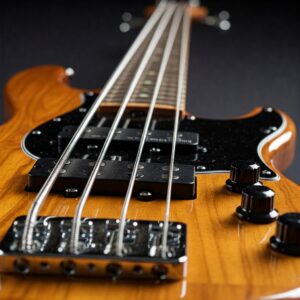
Key Features to Consider When Buying a 4 String Electric Bass Guitar 🧠
Body Types and Woods 🌳
The body material of your 4 string electric bass guitar significantly impacts its tone and weight:
- Ash: Provides bright, clear tones with excellent sustain. Common in higher-end instruments.
- Alder: Balanced tone with slight mid-range emphasis. The traditional Fender bass wood.
- Mahogany: Warmer, richer tones with enhanced low-end. Often used in Gibson/Epiphone models.
- Basswood: Lightweight with neutral tonal characteristics. Common in budget to mid-range basses.
- Poplar: Affordable alternative to alder with similar tonal properties. Found in many entry-level models.
Body shape also affects comfort and balance. Traditional designs like the P-Bass and J-Bass have stood the test of time, while modern ergonomic shapes can reduce playing fatigue during long sessions.
Neck Construction and Scale Length 📏
The neck construction method affects tone, sustain, and stability:
✅ Bolt-on: Most common design. Bright tone, easier to adjust or replace if needed.
✅ Neck-through: The neck extends through the entire body length, offering superior sustain and stability.
✅ Set-neck: Glued into the body, providing a balance between bolt-on and neck-through characteristics.
Scale length (the vibrating string length) affects string tension and tone:
- 34″: Standard scale. Balanced tension and familiar feel.
- 30-32″: Short scale. Easier to play, warmer tone, good for smaller players.
- 35-36″: Extra-long scale. Tighter string tension for enhanced low-end definition (more common in 5-string basses).
I personally prefer a standard 34″ scale for maximum versatility, though short-scale basses have their own unique charm and can be excellent for players with smaller hands or those seeking a vintage tone.
Pickups and Electronics 🔌
Pickup configuration dramatically impacts your 4 string electric bass guitar’s voice:
- P-Style (Split Coil): The classic Precision Bass pickup delivers punchy, mid-forward tone with excellent noise rejection.
- J-Style (Single Coil): Jazz Bass pickups offer more treble definition and growl, especially when both pickups are used together.
- Humbucker: Powerful, noise-free operation with enhanced output. Popular in rock and metal-oriented basses.
- Soapbar: Versatile pickup design available in passive or active configurations.
Electronics further shape your sound:
- Passive: No onboard preamp. Warmer, more organic tone with limited tone shaping.
- Active: Battery-powered preamp provides boosted output and more extensive EQ options.
- Active/Passive Switching: Best of both worlds, allowing you to select between circuits.
When I’m recording, I often prefer passive electronics for their natural response, but for live performances, the flexibility of active systems proves invaluable for quickly adapting to different venue acoustics.
Bridges and Hardware 🔩
Often overlooked, hardware quality significantly impacts tuning stability, sustain, and overall reliability:
- High-mass bridges enhance sustain and resonance
- String-through-body designs can improve note definition
- Quality tuning machines ensure stable intonation
- Locking hardware maintains tuning during aggressive playing
While these components might not be as exciting as pickups or woods, they play a crucial role in your instrument’s overall performance and reliability.
Playing Techniques for 4 String Electric Bass Guitar 🎵
Fingerstyle Fundamentals
The most traditional approach to bass playing involves plucking strings with your index and middle fingers (often labeled as the “I” and “M” fingers in classical notation). This technique delivers a warm, round tone that works well in virtually any genre.
Pro Tip: Practice alternating between your index and middle fingers consistently to build speed and evenness. Many beginners fall into the trap of favoring one finger, which limits technique development.
I spent my first year as a bassist focusing exclusively on fingerstyle technique, establishing a foundation that continues to serve me well across diverse musical contexts.
Picking Prowess
Using a pick (plectrum) produces a more aggressive, defined tone with enhanced attack. This approach excels in rock, punk, and metal genres where articulation must cut through distorted guitars.
Pick Selection: Experiment with different thicknesses:
- Thin picks (.50mm-.60mm): Easier control, lighter tone
- Medium picks (.70mm-.85mm): Balanced attack and control
- Heavy picks (1mm+): Maximum attack and durability
Though often overlooked by traditional bass instructors, pick technique offers unique sonic possibilities that every well-rounded bassist should explore.
Slap and Pop Explosion
Popularized by legends like Larry Graham and Victor Wooten, slap bass produces that distinctive percussive funk sound:
- Slap: Strike strings with the thumb’s side near the fretboard end
- Pop: Hook finger under string and pull away from bass
- Double-thumbing: Using the thumb for both upstrokes and downstrokes
A quality 4 string electric bass guitar with proper setup makes slap techniques much more approachable. Look for models with:
- Medium-low action
- Roundwound strings
- Advanced bridge design that prevents string buzz
When I first learned slapping, I found that my Sterling by Music Man StingRay Ray4 made the technique significantly more accessible compared to my previous budget instrument.

Maintenance Tips for Your 4 String Electric Bass Guitar 🛠️
String Maintenance for Optimal Tone
Fresh strings transform any 4 string electric bass guitar. Different string types offer unique characteristics:
- Roundwound: Bright, punchy tone; standard on most basses
- Flatwound: Smooth, warm vintage tone; reduced finger noise
- Coated: Extended lifespan with slightly dampened high frequencies
- Stainless Steel: Bright tone with extended durability
Cleaning Routine: Wipe strings with a microfiber cloth after each playing session to remove oils and extend string life.
I change my roundwound strings every 2-3 months with regular playing, while my flatwounds can last a year or more while maintaining acceptable tone.
Setup Basics Every Bass Owner Should Know
A properly set up 4 string electric bass guitar plays better, sounds better, and protects against potential damage:
✅ String Height (Action): Lower action improves playability but too low causes buzz
✅ Neck Relief: Slight forward bow prevents buzzing
✅ Intonation: Ensures accurate pitch across the entire fretboard
✅ Pickup Height: Affects output and tonal balance
While complex adjustments might require professional service, basic maintenance like cleaning and string changes are skills every bassist should develop.
FAQ: Common Questions About 4 String Electric Bass Guitars 🤔
How much should I spend on my first 4 string electric bass guitar?
For beginners, I recommend budgeting between $200-400 for your first instrument. This price range offers decent quality without excessive investment while you’re still determining your long-term interest. Avoid ultra-cheap instruments under $150, as they often have playability issues that can hinder progress and enjoyment.
Are 4 string electric bass guitars suitable for all music styles?
Absolutely! While extended-range basses (5 or 6 strings) offer additional notes, a 4 string electric bass guitar handles virtually every musical genre effectively. From jazz and funk to rock, metal, country, and pop, the standard EADG tuning covers the fundamental bass ranges needed for most music.
What’s better for beginners: passive or active electronics?
For most beginners, passive electronics provide a more straightforward experience without worrying about battery changes or complex EQ controls. However, if you’re specifically interested in modern rock, metal, or slap techniques, an active instrument with a preamp might better suit your needs from the start.
How often should I replace strings on my 4 string electric bass guitar?
This depends on playing frequency, personal preference, and string type:
- With regular playing, roundwound strings typically need replacement every 2-3 months
- Flatwound strings can last 6-12 months before tone deterioration
- Coated strings offer extended life, sometimes up to 4-6 months
- If strings appear discolored, feel rough, or lose their resonance, it’s time for a change regardless of timeframe
Can I use a guitar amp with my 4 string electric bass guitar?
While possible in a pinch, guitar amps aren’t designed for bass frequencies and may suffer damage when pushed at higher volumes. For proper tone and equipment safety, invest in a dedicated bass amplifier or use an audio interface with bass-specific software for practice.
Advanced Considerations for Experienced Players 🧪
Exploring Alternative Tunings
While standard EADG tuning serves most musical contexts, alternative tunings can inspire creativity and access unique tonal possibilities:
- Drop D (DADG): Lowers the E string one whole step for extended low range
- Half-Step Down (D#G#C#F#): Creates a slightly looser feel with darker tonality
- Piccolo (ADGC): Raises all strings one octave for melodic playing
Many models on our list, particularly the Fender American Professional II Precision Bass and Sandberg California II, handle alternative tunings exceptionally well due to their superior neck stability and hardware quality.
Customization Options for Your 4 String Electric Bass Guitar
Once you’ve found your ideal base instrument, these modifications can further personalize your tone:
- Pickup upgrades: Aftermarket options from Seymour Duncan, EMG, or Nordstrand
- Preamp replacements: Systems from Aguilar, Darkglass, or Audere offer expanded tonal possibilities
- Bridge upgrades: High-mass replacements can enhance sustain and stability
- Tuning machines: Locking or higher-gear-ratio tuners improve tuning accuracy
Even modest upgrades can significantly transform your instrument’s performance, sometimes rivaling basses costing twice as much.
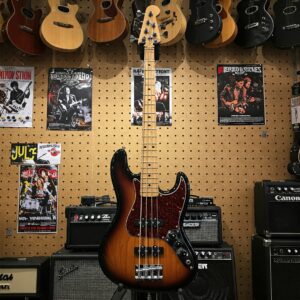
Conclusion: Finding Your Perfect 4 String Electric Bass Guitar 🏆
The journey to finding your ideal 4 string electric bass guitar is deeply personal, reflecting your unique musical voice, physical preferences, and sonic goals. Whether you’re drawn to the thunderous punch of a Precision Bass, the articulate growl of a Jazz Bass, or the modern versatility of an active instrument, today’s market offers exceptional options at every price point.
For beginners, the Ibanez GSR200 and Squier Affinity PJ Bass provide excellent entry points without overwhelming investment. Intermediate players will find tremendous value in the Sterling Ray4 and Yamaha TRBX504. And for professionals demanding the absolute best, the Fender American Professional II P-Bass and Sandberg California II deliver world-class performance that will inspire for decades.
Remember that even the finest 4 string electric bass guitar is ultimately a tool for musical expression. Regular practice, technique development, and playing with others remain the most important factors in your growth as a bassist.
Don’t miss out on today’s special pricing! Click through now to Amazon and secure the perfect 4 string electric bass guitar to elevate your playing and inspire your musical journey. 🛒
More FQAs:
❓ Is a 4 string electric bass good for beginners?
✅ Yes, a 4 string electric bass is ideal for beginners due to its simpler tuning, lighter feel, and easier learning curve compared to 5 or 6 string models…
❓ What tuning is standard for a 4 string electric bass guitar?
✅ The standard tuning for a 4 string electric bass guitar is E-A-D-G, from the lowest to highest string, matching the lowest four strings of a standard guitar one octave down…
❓ Can you play metal on a 4 string electric bass?
✅ Absolutely, a 4 string electric bass can handle metal genres with ease, especially when paired with the right amp settings and playing techniques like pick-style or palm muting…
❓ How is a 4 string electric bass different from a 5 string?
✅ A 4 string electric bass has one less string than a 5 string, making it lighter and easier to play, but with slightly less range in the lower register…
❓ Do you need an amp for a 4 string electric bass guitar?
✅ Yes, to hear the full sound of a 4 string electric bass guitar, using an amp is essential, especially for practice, recording, or live performance…
Recommended for You:
- Upright Bass Strings: 7 Exceptional Options for a Powerful Sound
- Rainbow Bass: 10 Amazing Custom Finishes That Will Transform Your Sound
- 10 Best Electric Bass Case Options That Will Protect Your Instrument in 2025
Disclaimer: This article contains affiliate links. If you purchase products through these links, we may earn a small commission at no additional cost to you.
